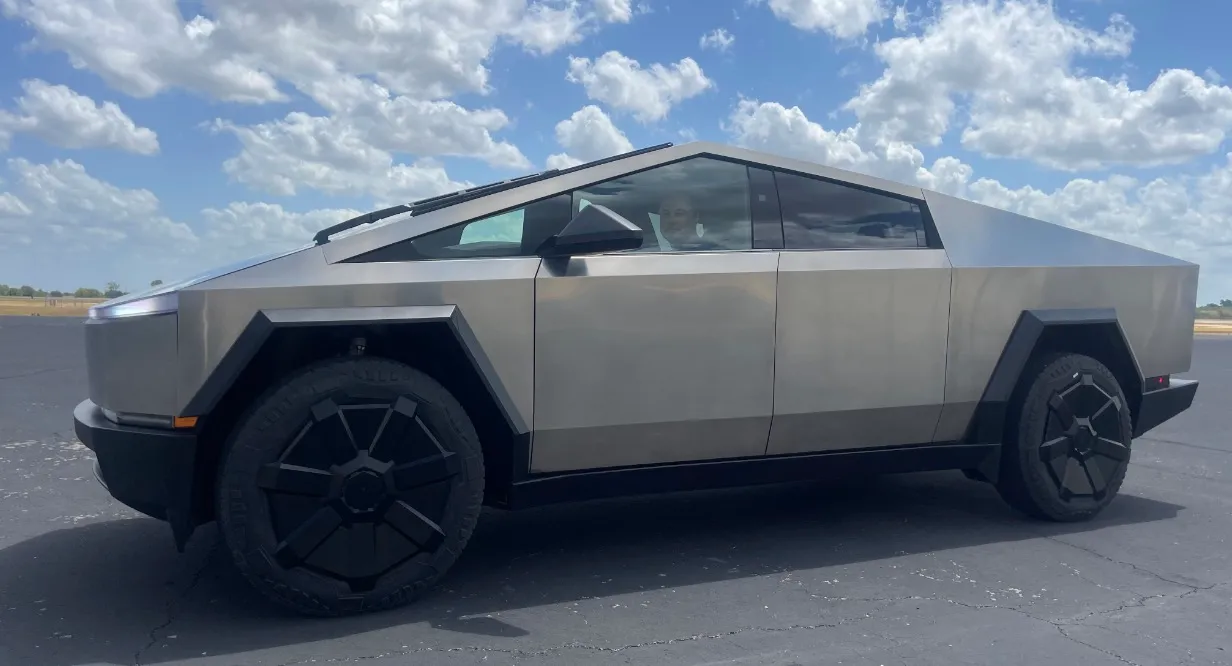Tesla, a pioneer in electric vehicles (EVs), has faced consistent scrutiny regarding the accuracy of its range estimates. The spotlight now falls on the Tesla Cybertruck, a vehicle that has stirred controversy with its recent test results.
Introduction
In this article, we delve into the details of a comprehensive test conducted by Kyle Conner from Out of Spec Motoring. The test aimed to push the limits of the Cybertruck’s range under typical conditions, revealing a substantial 20.6% shortfall from Tesla’s advertised range.
The Test Details
Conner’s approach was straightforward: drive the Cybertruck until it could no longer move, maintaining a speed of 70 mph on a chilly Texas night. The test vehicle, equipped with 20-inch wheels and 35-inch all-terrain tires, covered only 254 miles, significantly less than Tesla’s claimed 320-mile range.
Advertised vs. Actual Range
The discrepancy raises questions about the accuracy of EV range estimates, particularly from a powerhouse like Tesla. A comparison with competitors, such as Rivian, accentuates the significance of the Cybertruck’s underperformance.
Implications for EV Buyers
While one may commend the Cybertruck’s performance under challenging conditions, the real-world implications are substantial. The test underscores the need for potential EV buyers to carefully consider the advertised range, especially for long-distance travel or heavy-duty tasks.
External Factors and Performance
The test also hints at the potential impact of external factors on EV performance. Questions arise about the Cybertruck’s performance in colder temperatures or with a heavier load. The common practice of maintaining battery charge between 20% and 90% adds further complexity to real-world applicability.
Tesla’s Response
Tesla offers a potential solution with the option to switch to all-season tires, claiming an increased range of 340 miles. However, the article questions whether this adjustment alone can bridge the gap between expectation and reality.
The Broader Picture
Reflecting on the controversy, the article discusses the broader implications for the EV industry. It touches upon the advancements in EV technology and the challenges that persist, emphasizing the critical role of buyer awareness.
Conclusion
In conclusion, the Cybertruck’s range test serves as a reminder that while EVs represent a leap forward in automotive technology, accurate range estimates remain crucial. Potential buyers must approach EV purchases with a discerning eye, understanding the real-world performance beyond advertised numbers.
Frequently Asked Questions
- Is the Cybertruck’s underperformance unique to Tesla, or do other EV manufacturers face similar challenges?While Tesla has been under the spotlight, other EV manufacturers also encounter challenges in accurately predicting real-world range, though the extent may vary.
- How do external factors like temperature and load impact EV range, and is this a concern for all electric vehicles?External factors, such as temperature and load, can indeed affect EV range. However, the degree of impact varies between different models and manufacturers.
- What steps can potential EV buyers take to ensure they make an informed decision regarding the vehicle’s range?Potential EV buyers should consider real-world test results, reviews, and the specific conditions under which a vehicle’s range is tested to make an informed decision.
- Does Tesla’s option to switch to all-season tires guarantee the advertised range, and is it a common practice in the industry?While the option to switch to all-season tires might impact range, its effectiveness and commonality in the industry are subjects of ongoing debate and analysis.
- Are there ongoing efforts within the EV industry to standardize range testing and improve the accuracy of advertised ranges?Yes, efforts are underway to establish standardized testing methods for EV ranges, aiming to provide consumers with more accurate and comparable information.


